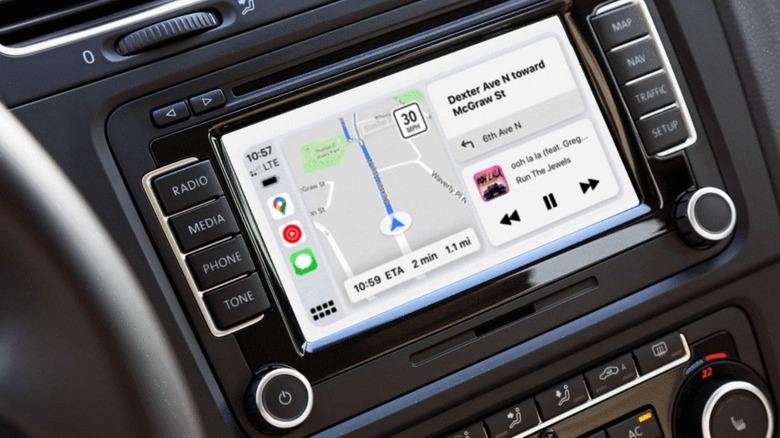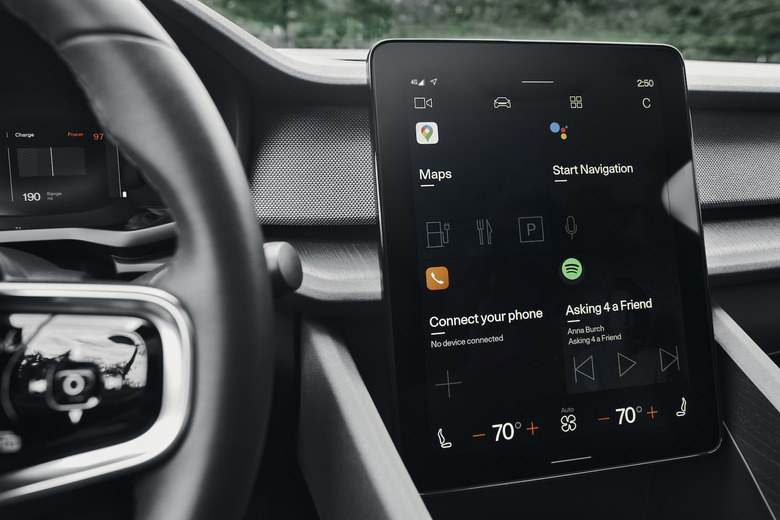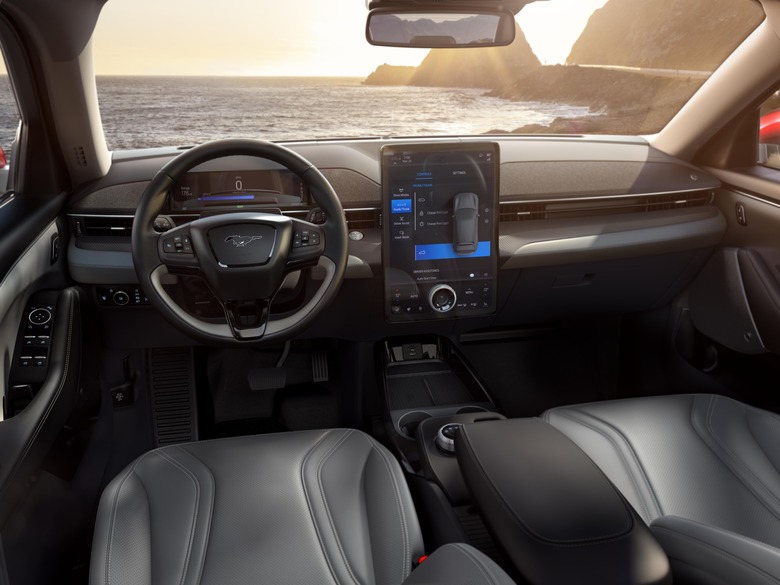The War For Your Car's Dashboard Got Serious - Here's The New State Of Play
For a long time, the most complicated part of the car dashboard was figuring out where to hang your furry dice. These days, though, bigger screens – and more of them – are just the surface glitter on a new age of vehicle tech. The potential for confusion is accelerating, not least as new names wade into car software.
Until the last year or so, you really didn't need to think about what software was running on your car's dashboard. In fact, automakers usually didn't want to talk about it: the reality that many vehicles shared much of the same underlying third-party code, only skinned to match individual vehicle and brand aesthetics, was just another confusing aspect of the automotive supply chain.
Apple CarPlay and Android Auto put the phone first
People arguably started paying more attention to software with the arrival of Apple CarPlay and Android Auto. Officially known as projection systems, the ability to plug in your iPhone or Android smartphone and have a familiar interface – and familiar media and apps – suddenly became a must-have for many when shopping for a new vehicle. Wireless versions of the two have been slower to proliferate, but they're still helping shift what we expect to see on our in-car displays.

The reality, though, is that Apple and Google were never really going to be satisfied solely with projection. For a start, it's a fairly barebones implementation: the smartphone gets very little data from the vehicle, and so it's basically the equivalent of plugging a second monitor into your computer. Google Maps or Apple Maps can't tap into the vehicle's speed data, for instance, it has to keep using its own GPS for positioning.
Far more juicy is the idea of actually running your own software on the car itself, and that's the situation we're getting into now. Android is actually no stranger to the dashboard, with a number of companies using the OS to build their own infotainment interfaces. With Android Automotive OS, though, Google waded into the arena itself.
Android Automotive OS is not Android Auto (yes, it's confusing)
The first confusion is a common one: Android Automotive OS isn't Android Auto. With hindsight, Google probably should've given one of them a different name, to better distinguish what's in fact two very different prospects.
Android Auto runs on your phone, and overlays its interface atop the native software running on the car's system. Android Automotive OS, though, is the car's native system.
The reasons for that are clear: Google can take its fill of the car's core data. Android Automotive OS running on a Polestar 2, for example, doesn't just know where the vehicle is from GPS. It also knows its speed, the status of its battery, whether the lights are switched on, and other granular information. At the same time, it can control everything from the navigation and climate control, to adjusting advanced driver assistance system (ADAS) settings.
Apple, for the moment, doesn't have a counterpart, running iOS or some variation on that in vehicles. Still, the longstanding rumors around its Project Titan division have suggested that's at least one strategy the Cupertino firm has been exploring.
Drivers want familiarity - Automakers and Big Tech want control
For their part, automakers have been cautiously enthusiastic about Big Tech getting onboard. For a few years, there was a general reluctance to ceding prime dashboard real-estate: car-makers much preferred the idea of owning the whole infotainment experience, and keeping phones at arm's length. More recently, however, that has seemed a far less realistic possibility.

On the one hand, consumers are demanding a more phone-like experience. On the other, there's the pure complexity of building systems that behave like smartphones and tablets, which are open to third-party apps and services, and which receive the inevitable security patches and feature updates that are now to be expected. That's a full time job in and of itself, and automakers are – perhaps grudgingly, though not always – finally recognizing that handing that responsibility to the experts might make their lives easier, and cheaper too.
We saw that first with Volvo and Polestar, early adopters of Android Automotive OS, and content to hove off infotainment development to Google while they focused on the rest of the vehicle. Since then, General Motors and now Ford have climbed aboard too. The exact justification for those agreements is always buried in chatter of shared values and industry synergy, but it's hard to imagine it really takes much more than recognizing that building things like proficient natural-language voice recognition and mapping with real-time navigation is tough, and even if you go to the effort of doing it yourself potential customers only end up asking for the Google version they already know.
You don't want Smart Car Synergies - you just want it to work
What remains to be seen is how well all these systems play together in the long run. Android Automotive OS, for example, promises to be platform-agnostic when it comes to your phone. It should support Apple CarPlay if you want to plug in an iPhone, for example (even if that's actually arriving late), and Ford today said that the Google OS' support for things like Ford Smart Device Link (SDL) and Amazon Alexa was a key part of negotiations.

That's important, because while knowing the software that's running on your car's dash might be of interest to enthusiasts, most people simply aren't going to care. Apple CarPlay and Android Auto have been instrumental in leveling the playing field, in some ways: it doesn't matter if you plug your iPhone into a recent Lamborghini or a Chevrolet Spark, Apple's interface looks the same. Once you've lived with that flexibility, it's hard to go back.
For the moment, this "smartphoneification" of the dashboard is still in its infancy. Android Automotive OS, for example, boasts support for the Google Play store, though right now there's only a small handful of apps predominantly for third-party music and podcast streaming. We're a long way from a free-for-all of software, and quite frankly that seems unlikely to ever arrive in what's generally a tightly-regulated environment. Your Android phone crashing because of a badly-coded app is annoying: your Android-powered car crashing because of that app glitch is a little more serious.
There's still time before we see how quick that roll-out comes, then. Ford isn't planning on launching the first new vehicles – both its own, and new Lincoln models – with Android Automotive OS until 2023. It still hasn't said what they'll look like, since the platform supports custom skins, or whether they'll be branded as SYNC like its current infotainment platform. GM's first models to use the system will be sometime this year, it has said previously. Whether any of them will support a furry-dice app remains to be seen.
